Case studies
Industries
Resources
TikTok Collection
NEW
Table of Contents
We’re all familiar with the power of word-of-mouth marketing. Ads can’t compete with the shopping inspiration that comes from a peer recommendation. When someone you know and trust tells you about a great new product that they’ve discovered, you’re more likely to take action and try it for yourself.
This is something that we, as marketers, know for a fact. Word-of-Mouth marketing works because it isn’t the brand recommending the product. It’s a real, unbiased person, who is just trying to find the best solution for your need. And that is extremely powerful in the congested marketplace of eCommerce. It’s an organic action that needs to remain that way in order to be effective.
But that doesn’t mean there isn’t a way for use to leverage the product of word-of-mouth marketing, especially in our digital world.
Before we hoped that people were talking about our products, now we can see that they’re doing so online. Social media has become a fountain of social proof examples that create our world of digital word-of-mouth marketing.
So how can you leverage these kinds of interactions?
We’re in an age where visual content is shared like wildfire across social media, email, and text message. No matter the channel, people want to see their friends, family, and even complete strangers living their best lives through these shared images and videos.
What if your products happened to be in that content? What if the content was specifically shared to say how much they love your brand? That would be the authentic word-of-mouth marketing gold that your brand should be on the hunt for.
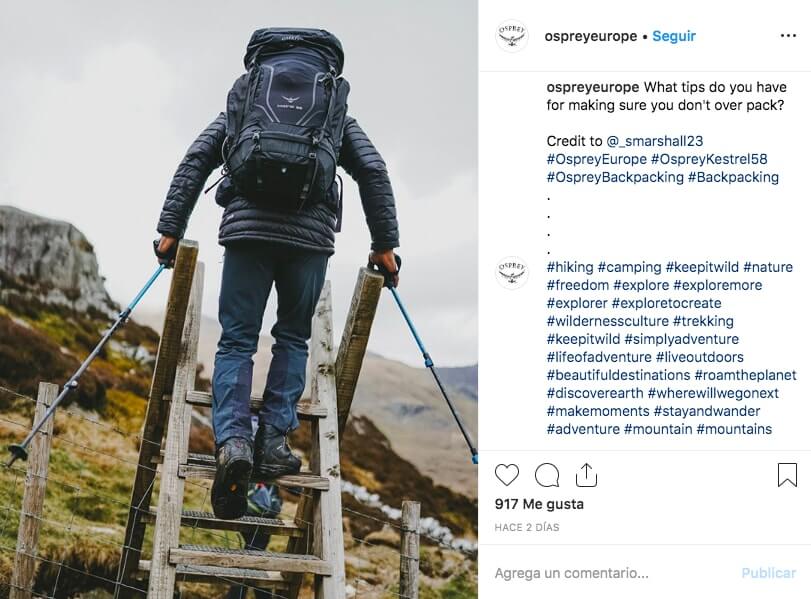
There’s no doubt that social media has had a huge impact on the online buying process today. When 74% of consumers rely on social media to guide their purchases, brands really can’t miss out on the opportunity to reach potential customers through social proof.
Social proof is a phrase we hear thrown around a lot. But one shouldn’t underestimate the power of social influence, which is the basis of the social proof theory. By leveraging social proof in your online store, you can augment the engagement that you see on social media and turn it into sales. For that, you’ll need a few social proof examples to help you understand what we mean.
There’s a reason why influencer marketing has become such a high-power form of reaching the everyday consumer. This is because this kind of marketing leverages social influence in getting the word out about your products.
Through influencers, your products are not only being seen by potential customers, but they’re also placed in an authentic setting by a cool person that is virtually putting a gold seal of approval on your brand.
The advantages are obvious: people are more interested in your products because someone they admire is telling them to be. This is why social proof can be so powerful! And it’s taken to the next level when your UGC is created by not only influencers – but by the everyday consumer.
Here’s an example of how sports brand, Hummel, uses social commerce examples in their online shopping journey to encourage customers to engage with the brand.

But in order to achieve something like this, you need content created by customers featuring your products. Don’t worry, we’ve got you covered.
So where are everyday consumers creating content that you can collect and use in your marketing and eCommerce efforts? I think you know the answer!
That’s right, social media. Instagram, Facebook, even YouTube. People around the world are creating over 100 million images and videos every single day on Instagram alone. When curated correctly, we’re talking about high-quality content featuring your products that you don’t have to pay a cent for.
It may seem overwhelming, but all of this content can be collected through a UGC platform to be managed and used by your brand. The only catch is: you can’t collect content that doesn’t exist yet.
Lots of brands dismiss starting a UGC strategy because of a lack of content to collect. But don’t lose faith! Here are some actionable tips for helping you to grow your base of visual customer content.
We hear a lot from brands who struggle to get customers to share content. And when they do, it’s not often content that they actually want to use in their eCommerce efforts. That’s why we’ve pulled together these helpful tips from real brands who found success with them.
One of the best ways to kickstart your UGC campaign is starting with influencers. This is exactly what the Instagram gurus over at Daniel Wellington have done.
Ready to take your engagement to the next level? Book a demo with Flowbox now!
By getting many influencers to post very high-quality content featuring their watches, the brand has managed to encourage their customers to do the same. Not only that, but it’s very clear that DW has given specific instructions to their partners on the kind of content that they’d like to see.
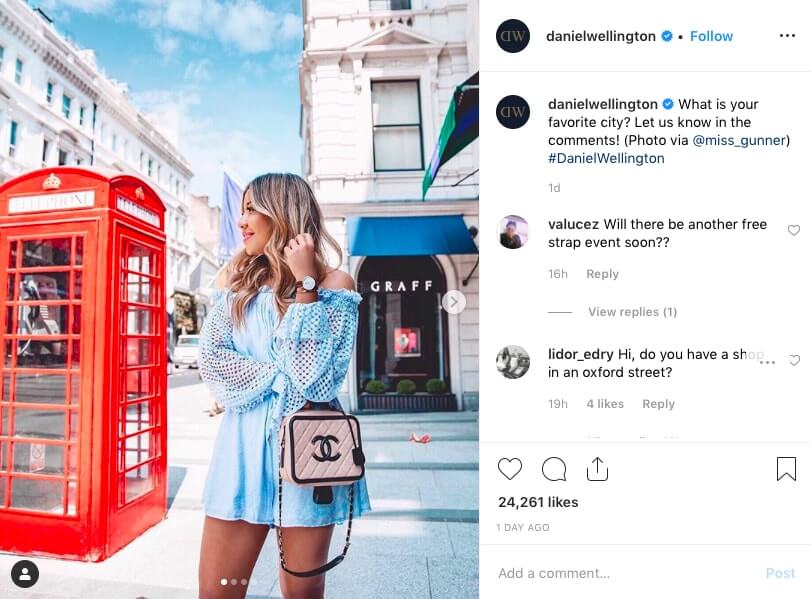
The more specific you are, the better the content will look when you receive it back. Not only that, but remember that normal users are creating their own UGC based on what they think the brand will repost. If they see that influencers are posting content with specific colors or featuring particular backgrounds, they’ll seek to do the same. Meaning more great content for you!
Another tool that DW has used very well is their #DWPickOfTheDay. By choosing influencer content at the start, now DW has their pick of User Generated Content to select from.

People are much more likely to post for your brand, if you find a way to make it personal to them. That’s why creating a specific campaign surrounding your products, like furniture brand VOX did, can help set off your UGC strategy.
VOX found that the recognizable styles that we see everywhere (i.e. Bohemian or Scandinavian styles), don’t really reflect how real people live. That’s why they created a book of lifestyles that they felt people could really identify with.
And they were right! Once they developed their book full of images of these lifestyles and shared them on social media, they found that their customers were happy to share content with the brand’s products.
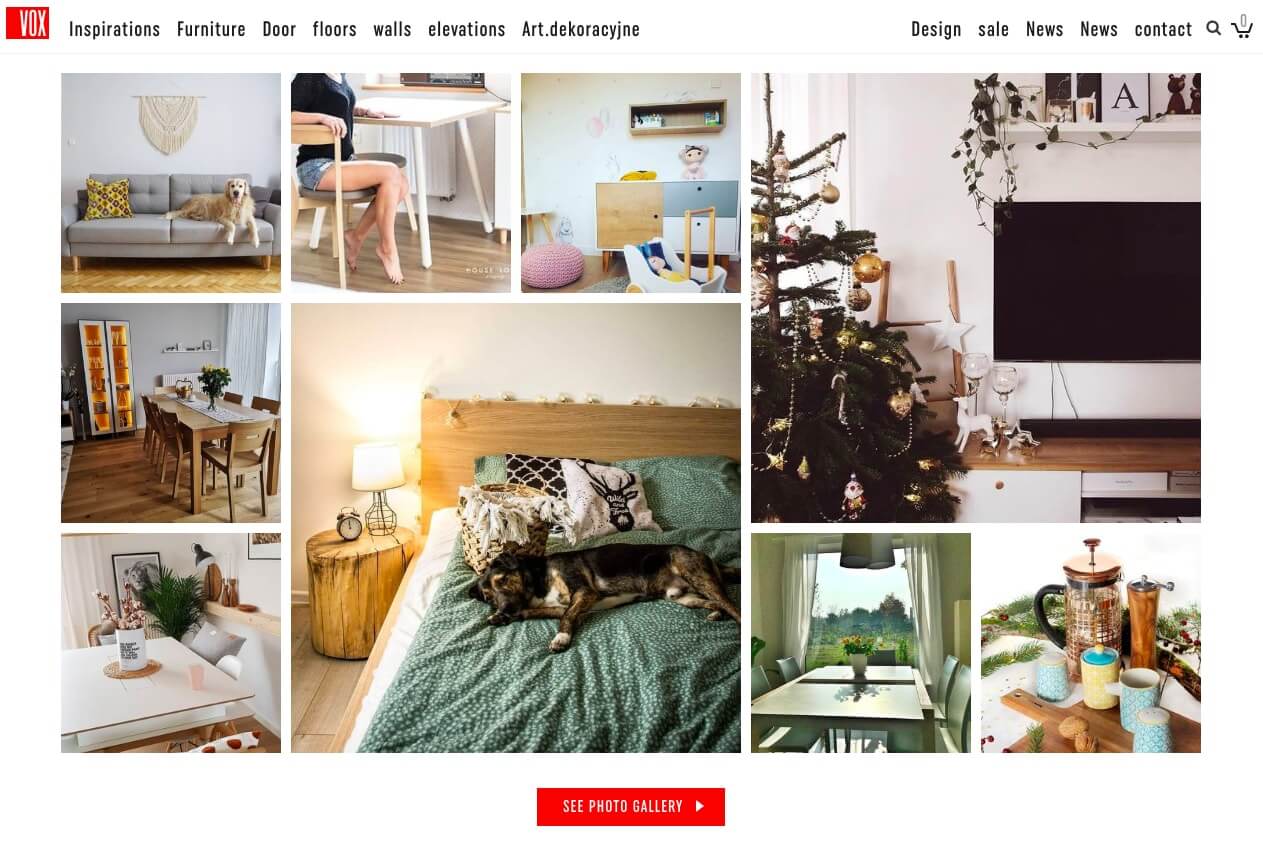
Now they have a consistent stream of high-quality images that they can collect and upload into their eCommerce store – and even make it shoppable.

This has helped the brand improve their eCommerce performance (they increased their conversion rate by 18.76% with authentic UGC), and it’s all thanks to their lifestyle campaign. Never underestimate the importance of creating a personal connection with your customers!
The best way to ask your customers for a favor is to give them something in return. A classic giveaway is the perfect time to ask users to post an image or video in exchange for entry. Like maternity brand Seraphine did in this example!
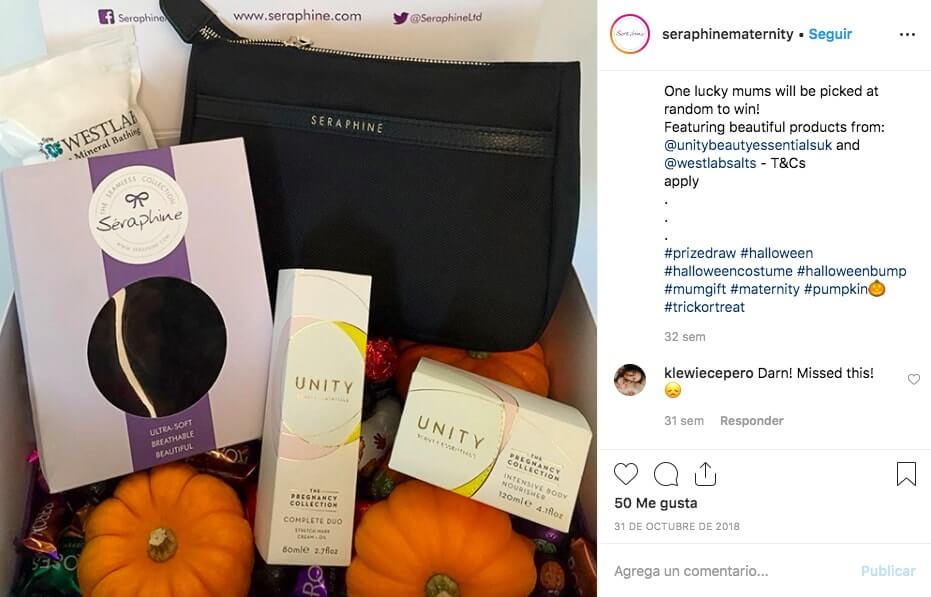
What’s important to note here, is that the brand is being specific with the kind of content they’d like to receive. By asking to see how their customers “dress their bump,” they’re giving quite direct instructions on how they could win the giveaway.
This is really helpful when it comes to receiving content that you actually want to use.
One last final word of advice is asking your customers to post when they’re most likely to do so. When would that be?
Hint: it’s usually when they’re feeling the most excited! That means holidays or events, as this is when people usually reach for their phone to post on Instagram.
Another great time is right when they receive their purchase. If you remind them on the packaging to post a picture with their new product, they may just be excited enough to do so!
A neat thing that brand thredUP has done in the past is put a note on packaging mentioning that if customers take an image with the product they just purchased, they could win a refund on the purchase altogether. Again, it’s little incentives like these that get your customers snapping pictures.
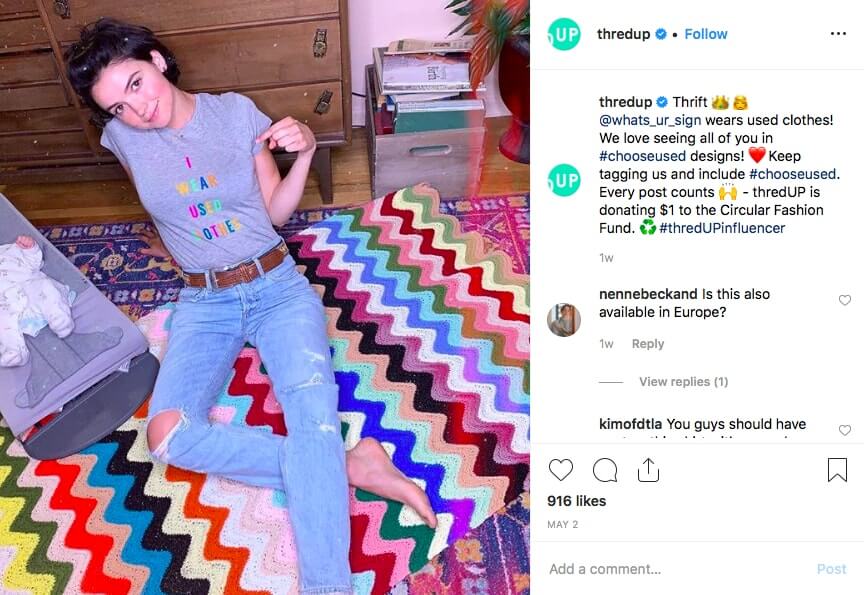
Let’s move on to the next step of using this content to further improve your digital performance.
Since we’re talking about eCommerce performance, it’s time to discover how you can elevate this kind of content in your webshop.
With a User Generated Content platform, you can use a social media aggregator and integrate it into a lookbook on your site, like watch brand CLUSE in this example.
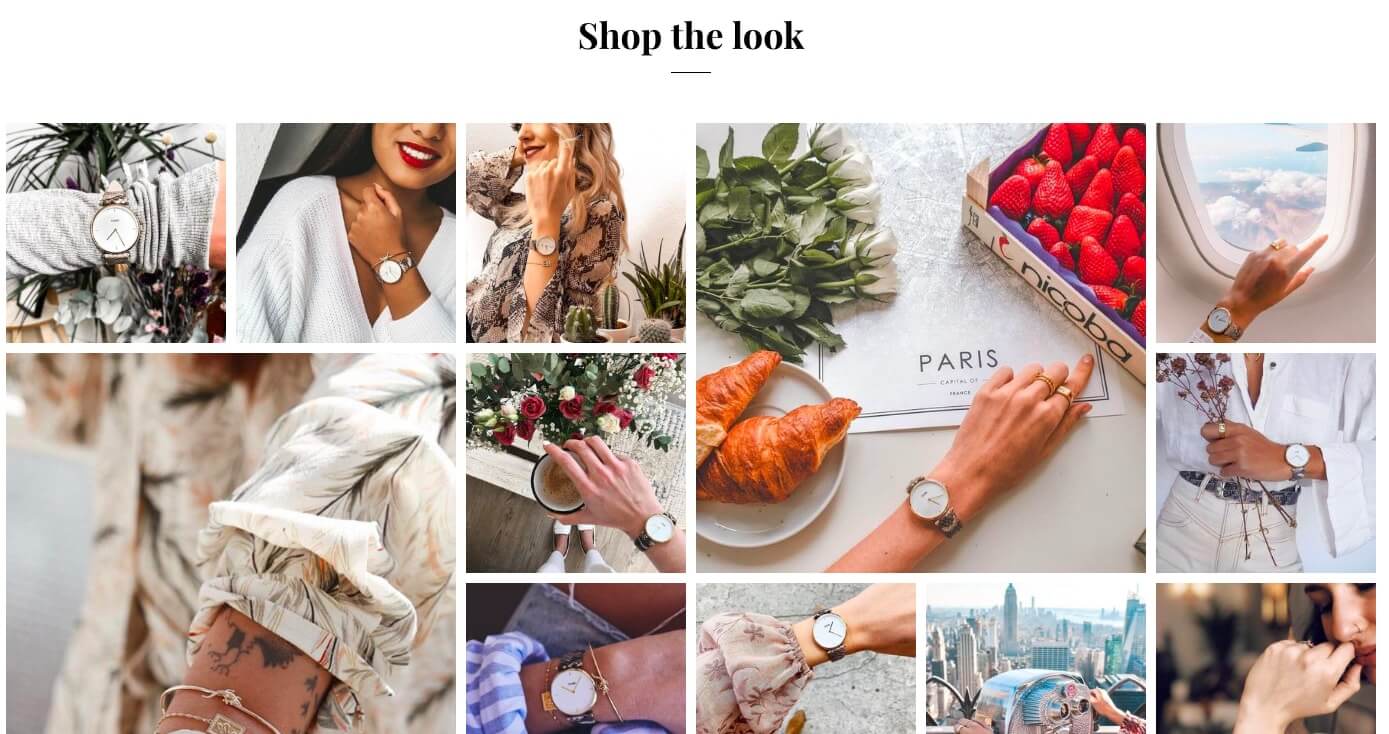
This content can then be made shoppable, meaning it’s attached directly to the product that is featured within it.
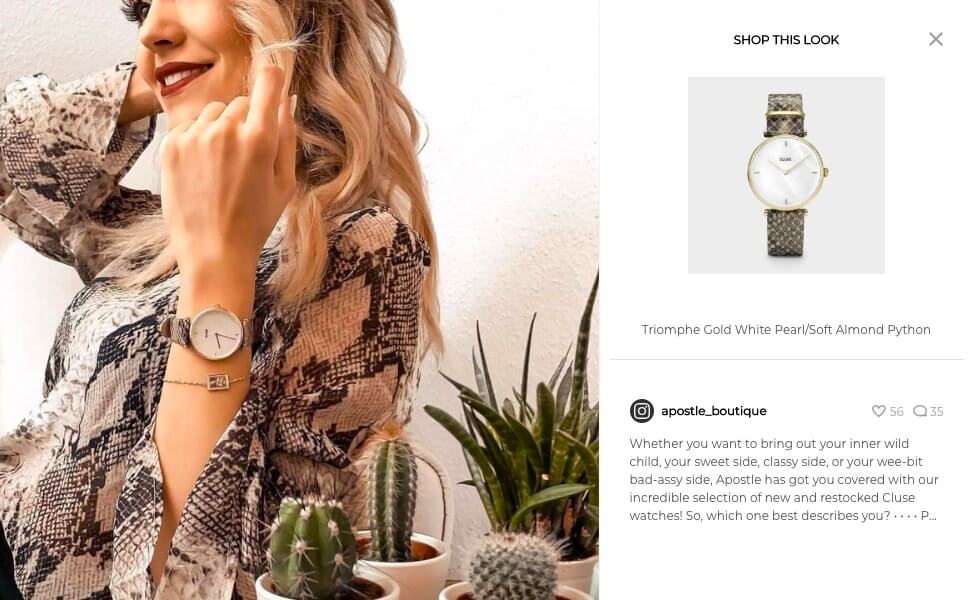
This kind of integration allows you to measure exactly how well each piece of UGC is helping your conversion rate, which helped CLUSE identify that authentic customer content brought them a 19% increase of conversions.
To really leverage social proof like these examples, you can include product specific UGC on your product pages like shoe brand Ulanka.
When customers are shopping a specific shoe, they are shown images of people wearing that exact model to help them understand how they look or fit and why other people like them.
It doesn’t have to stop there. The gift of UGC can keep on giving if you include it in social ads to attract more eCommerce shoppers in an authentic way, within email marketing to keep customers coming back to your store, and even on live screens in store.
With the opportunities that we have to reach customers in the digital age, it’s a detriment to you brand to do anything but leverage your resources. Plus, based on the data we can see just how interested customers are in seeing social proof throughout their shopping journey.
Still not sure how to move forward? Reach out to our team – we’d love to point you in the right direction.